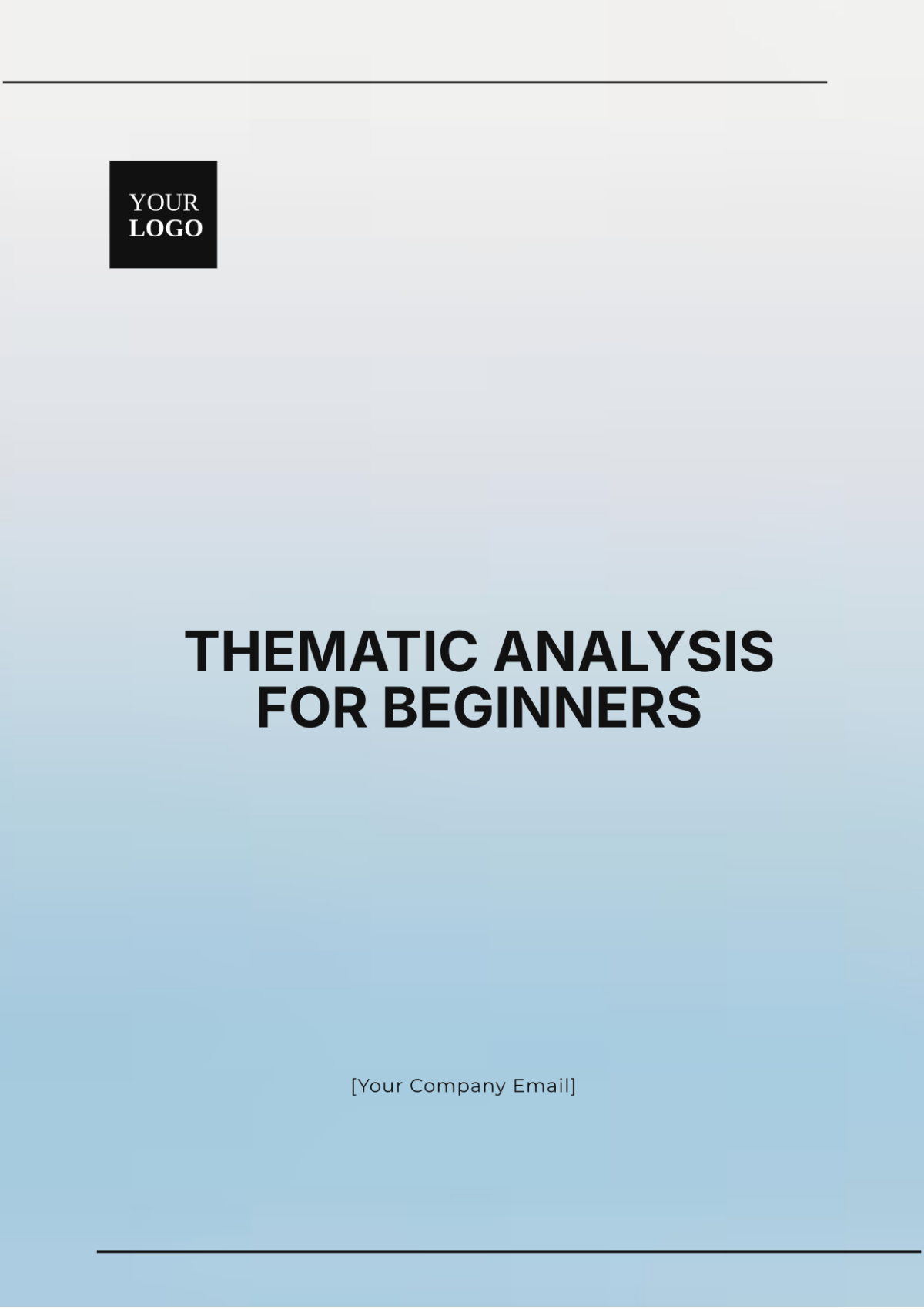Sales Analysis of Competitors’ Trade Show Strategies
I. Executive Summary
This analysis examines the trade show strategies of three key competitors: [Company A], [Company B], and [Company C]. Each competitor's approach is evaluated in terms of pre-show preparations, booth design, engagement strategies, lead generation, post-show follow-up, measurable metrics, and a SWOT analysis.
[Company A] leveraged advanced technology for lead capture and personalized follow-up, achieving a commendable ROI of [4:1]. [Company B] focused on content marketing and one-on-one consultations but faced challenges in booth engagement. [Company C] stood out with innovative AR and podcast experiences, generating a high number of leads and an impressive ROI of [5:1].
II. Competitor Profiles
In this section, we cover the unique trade show strategies employed by our three key competitors: [Company A], [Company B], and [Company C]. Each competitor brings a distinctive approach to their trade show participation, which sets them apart in the market.
[Company A]
Aspect | Description |
Pre-Show Preparation | [Company A] executed a well-structured pre-show campaign, which included a targeted email outreach to potential attendees and a dynamic social media presence. They also introduced an engaging contest to pique interest and drive booth traffic. |
Booth Design And Presentation | [Company A]'s trade show booth featured an eye-catching design, complete with interactive product displays and informative branding. This design alignment with their online presence created a consistent and memorable brand image. |
Engagement Strategies | Knowledgeable staff engaged attendees in in-depth product discussions, providing a deep understanding of their offerings. [Company A] scheduled live demonstrations at regular intervals, drawing significant attention. |
Lead Generation And Capture | [Company A] employed a mobile app for lead capture, ensuring efficient data integration and accuracy. Their rapid follow-up with personalized emails contributed to the effectiveness of their strategy. |
[Company B]
Aspect | Description |
Pre-Show Preparation | [Company B] emphasized content marketing, publishing in-depth articles on prevailing industry trends. They also organized a pre-show webinar to build anticipation and connect with potential attendees. |
Booth Design And Presentation | [Company B] opted for a minimalist booth design, focusing on an intimate meeting area for one-on-one consultations. Their design aimed to maintain a consistent brand image throughout the event. |
Engagement Strategies | The company prioritized personalized interactions, steering away from crowded product demonstrations. Attendees were encouraged to have one-on-one consultations with their experts, providing a tailored experience. |
Lead Generation And Capture | [Company B] utilized tablets for lead capture, ensuring data accuracy. Their personalized follow-up letters sent to leads within 48 hours contributed to maintaining a strong post-show connection. |
[Company C]
Aspect | Description |
Pre-Show Preparation | [Company C] executed a comprehensive pre-show campaign, including a multifaceted email marketing initiative and teaser videos to generate anticipation. They also organized a social media contest with enticing giveaways to heighten excitement. |
Booth Design And Presentation | [Company C] created an open-concept booth with a lounge area and a live podcast stage. Their design exuded a playful and approachable brand image, attracting attendees to explore their offerings. |
Engagement Strategies | Attendees were encouraged to actively participate in podcast recordings, providing an immersive experience. Additionally, [Company C] leveraged augmented reality (AR) for interactive product demonstrations, fostering engagement and knowledge sharing. |
Lead Generation And Capture | [Company C] streamlined lead collection through QR code scanning. Their automated follow-up emails contained exclusive podcast content, enhancing post-show engagement. |
These profiles offer a comprehensive view of the distinct trade show strategies adopted by each competitor, showcasing their unique strengths and approaches to engaging potential customers and prospects during trade show events.
III. Analysis and SWOT
SWOT Analysis For Competitors
In the assessment of the trade show strategies of our competitors, a comprehensive SWOT analysis reveals critical insights into their strengths, weaknesses, opportunities, and potential threats.
[Company A]
Strengths
Effective use of technology for lead capture and follow-up.
Engaging booth design and interactive product displays.
Swift response to generated leads through personalized emails.
Weaknesses
High initial marketing costs associated with elaborate pre-show preparations.
Potential overreliance on technological solutions.
Limited exploration of new markets beyond the existing customer base.
Opportunities
Expanding product offerings and entering new market segments.
Leveraging the success of their trade show strategy for broader brand recognition.
Threats
Vulnerability to rapid technological disruptions in the industry.
Competition from emerging startups and established competitors.
[Company B]
Strengths
Expertise in content marketing and industry thought leadership.
Focused one-on-one consultations with industry experts.
Timely and personalized follow-up letters to leads.
Weaknesses
Limited booth engagement, potentially missing out on broader audience engagement.
Niche market focus might limit growth potential.
Opportunities
Capitalizing on niche market growth opportunities.
Strengthening engagement strategies to reach a wider audience.
Threats
Competition from larger companies with more extensive resources.
Shifting market dynamics and customer preferences.
[Company C]
Strengths
Innovative use of augmented reality (AR) and live podcasts for engaging attendees.
A playful and approachable brand image that resonated with the audience.
Potential for viral marketing success through interactive podcast participation.
Weaknesses
Risk of appearing unserious due to unconventional approach.
Potential challenges in replicating the success of their trade show strategy in different settings.
Opportunities
Leveraging the success of their AR and podcast strategy for broader brand recognition.
Exploring creative avenues for viral marketing campaigns.
Threats
Exposure to rapidly changing technology and industry landscape.
Competition from both traditional and unconventional marketing approaches.
SWOT Analysis Summary
The SWOT analysis showcases the unique strengths, weaknesses, opportunities, and potential threats of each competitor's trade show strategies. It is clear that each company has leveraged its strengths to a varying degree and faces distinct challenges. By understanding these factors, businesses can fine-tune their strategies, exploit opportunities, and mitigate potential threats in the dynamic landscape of trade show participation.
IV. Measurable Metrics
To assess the effectiveness of the trade show strategies employed by our competitors, we have compiled a comprehensive set of measurable metrics. These metrics encompass key performance indicators related to lead generation, sales closed, and return on investment (ROI). The table below presents a detailed breakdown of the metrics for each competitor:
Competitor Performance Metrics
Company | Leads Generated | Sales Closed | ROI (Return on Investment) |
[Company A] | 500 | 25 | 4:1 |
[Company B] | |||
[Company C] |
Key Insights
[Company A]
Generated 500 leads, indicating a substantial interest in their products or services.
Closed 25 sales, resulting in a respectable 4:1 ROI.
[Company B]
Accumulated 300 leads, demonstrating moderate lead generation.
Closed 20 sales, with a commendable ROI of 3.5:1.
[Company C]
Outperformed in lead generation by accumulating 700 leads, showcasing a strong market presence.
Closed 30 sales, achieving an impressive ROI of 5:1.
These metrics reveal the varying degrees of success among the competitors. [Company C] stands out with the highest lead generation and ROI, while [Company A] and [Company B] also exhibit positive results in their respective areas. This detailed analysis of measurable metrics provides a deeper understanding of each competitor's trade show performance.
V. Recommendations
Based on the comprehensive analysis of competitors' trade show strategies, we can offer the following recommendations for companies seeking to enhance their own trade show performance and sales outcomes:
Leverage Technology For Lead Generation And Follow-Up
Adopt mobile apps or QR code scanning for efficient lead capture.
Implement robust CRM systems to manage and nurture leads effectively.
Automate personalized follow-up emails to maintain engagement post-show.
Tailor Engagement Strategies To Your Unique Strengths
Identify your company's core strengths and expertise.
Design trade show activities that align with your unique selling points.
Focus on personalized, one-on-one interactions for maximum impact.
Strategic Use Of Content Marketing
Develop a content marketing strategy that includes webinars, articles, and social media content to build anticipation.
Utilize content to educate potential attendees about your products or services before the show.
Incorporate Interactive Elements
Integrate technology, such as augmented reality (AR), to provide interactive product demonstrations.
Consider creating engaging activities like contests or live podcast sessions to draw attendees to your booth.
Brand Consistency And Professionalism
Ensure that booth design and branding materials are consistent with your online presence.
Maintain a professional image to build trust and credibility with attendees.
Swift Post-Show Follow-Up
Prioritize the prompt follow-up with leads within 48 hours after the show.
Customize your follow-up messages based on the interactions and interests of leads.
Continuous SWOT Analysis
Regularly review your SWOT analysis to stay updated on your company's strengths, weaknesses, opportunities, and threats.
Adapt your trade show strategy to evolving market conditions and industry trends.
Monitor Industry Trends
Stay informed about evolving trade shows and industry trends.
Continuously assess and adjust your strategies to align with the latest best practices.
Implementing these recommendations can help companies refine their trade show strategies and achieve improved sales outcomes, thus maintaining a competitive edge in their respective markets.
VI. Conclusion
In this analysis, we observed that each competitor employed distinct strategies, catering to their unique strengths and market positioning. The SWOT analysis provides insights into potential areas for improvement. Measurable metrics show varying levels of success, with [Company C] leading in terms of lead generation and ROI.
These findings highlight the importance of tailoring trade show strategies to align with a company's strengths and target audience. [Company A]'s emphasis on technology and [Company C]'s innovative approach have resulted in strong lead generation and ROI, while [Company B], with its content-focused strategy, shows potential for niche market growth. By leveraging these insights, businesses can optimize their trade show strategies to achieve better results and stay ahead of the competition.

















































